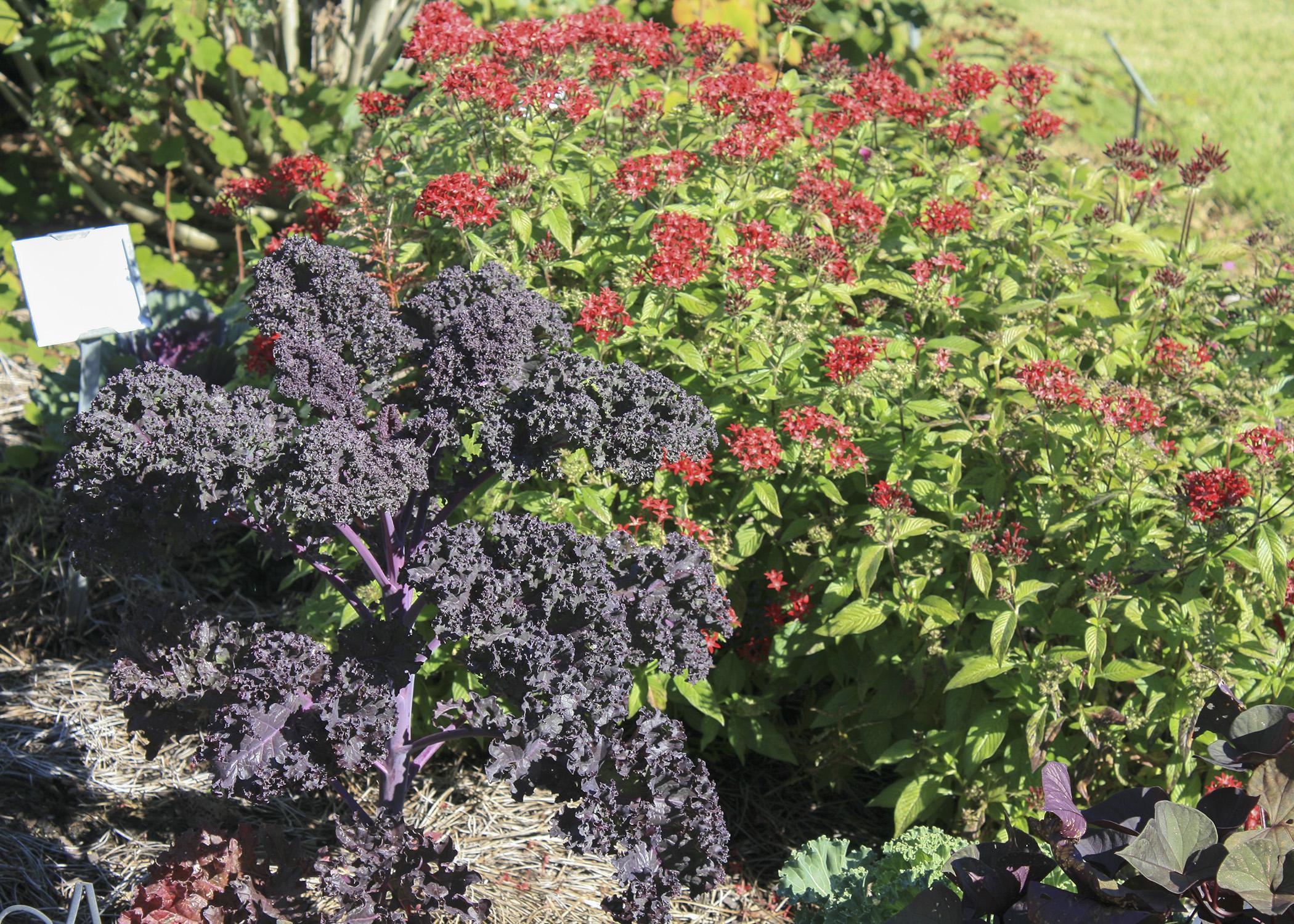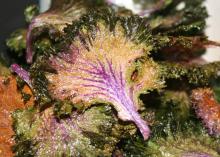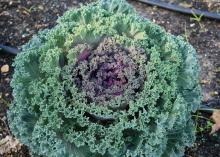Information Possibly Outdated
The information presented on this page was originally released on November 3, 2014. It may not be outdated, but please search our site for more current information. If you plan to quote or reference this information in a publication, please check with the Extension specialist or author before proceeding.
Ornamental cabbage, kale give winter color
This weekend, the thermometer in my garden got down to the low 30s and left me wondering if I’ve seen the last of my tomatoes and peppers. But it also reminded me that it’s time to transition to plants that thrive in lower temperatures.
Ornamental kale is one of my favorites for the cool season. There are so many different colors and leaf textures to add landscape interest. Don’t plant a single type. Mix and match for increased visual interest.
Ornamental kale plants are mostly green when first transplanted, but they begin to display colorful foliage as colder weather set in.
At garden centers, you will find ornamental kale and cabbage lumped together, which isn’t that much of a surprise since they are the same species, Brassica oleracea. Ornamental cabbage usually refers to selections that have smooth and more or less unruffled leaves. Kale, on the other hand, has ruffled, textured leaves, and many have feathered leaf edges. In my opinion, these features make ornamental kale much more interesting in the winter landscapes.
Although there are lots of great selections of ornamental kale, many garden centers won’t have them all. There has been a shortage of kale seed for growers, so you might have to shop around.
I like the red-colored selections, and a favorite is the Nagoya series of kale. This variety has uniform growth and attractive fringed leaves in red, rose and white.
Red Chidori kale is another good selection that forms loose heads that are extremely colorful. New foliage is a bright magenta-red that matures to a darker green with veins that maintain their magenta-red color.
Redbor kale is an outstanding choice that was named a Mississippi Medallion Fall winner in 2006. The frilly leaf color is a solid purple-red that intensifies as temperatures get lower during the winter. Redbor is also a long-lived plant; I’ve seen this plant still looking good in July and August in south Mississippi.
Good soil drainage is a must for growing kale and cabbage. I use raised beds for my in-ground ornamental plantings. Add composted organic matter at planting to increase drainage, but make sure the soil does not dry out. I really like growing these plants in containers because the excellent potting material available means I never have to worry about the plants having wet feet.
Everyone knows about droughts during the hot summer months, but it can happen in the winter, too. Cold fronts are often relatively dry, and the soil moisture can deplete rapidly. Kale likes consistent soil moisture, so apply a layer of mulch to help conserve soil moisture.
For best growth, don’t neglect fertilizer. Ornamental cabbage and kale are actually fairly heavy feeders. I like to add a tablespoon of a good, slow-release fertilizer into each planting hole to get the plants off to a great start. I use water-soluble fertilizer on a monthly schedule to keep the plants healthy and growing strong.
Don’t forget that ornamental kale is edible. The bright colors of these leaves can add pizazz to fresh salad or stir-fry.
Many Mississippi gardeners like to cut kale into squares and make kale chips as a snack. In the Bachman household, we grow the Nagoya ornamental kale because it is already chip-shaped. To prepare, mix with a little extra-virgin olive oil and sea salt and then bake at 240 degrees for about 45 minutes.
When growing ornamental kale and cabbage for snacks, consider starting your own from seed so you can control the plants’ environment. If this sounds like a tasty idea, it’s not too late in the season to get growing.










